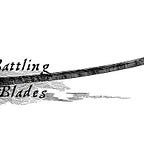The Evolution of the Spartan Helmet: From Mythical Origins to Iconic Symbol.
Delving into the History, Design, and Enduring Significance of the Spartan Helmet.
The Spartan helmet is an iconic symbol of ancient Greece, synonymous with the formidable warriors who defended their city-state with unwavering courage and discipline. But the Helmet's history extends far beyond its role as a piece of armor it is a testament to the ingenuity, craftsmanship, and cultural values of Spartan society.
Mythical Origins
The origins of the Spartan helmet can be traced back to Greek mythology, where it was associated with Athena, the goddess of wisdom and warfare. According to legend, Athena gifted the first helmet to the hero Theseus, who used it to slay the Minotaur. This mythical association established the helmet as a symbol of divine protection and a powerful weapon in the hands of a righteous warrior.
Early Helmets: From Bronze to Corinthian
The earliest Spartan helmets were made of bronze, a durable metal that provided protection against blows and projectiles. These early helmets, known as Phrygian helmets, were bell-shaped and covered the head from the top of the forehead to the nape of the neck. They were simple in design but effective in providing basic protection.
As Spartan warfare evolved, so did their helmets. The Corinthian helmet, which emerged around the 7th century BC, represented a significant advancement in design. It was a full-face helmet that provided complete protection for the head and neck, with eye holes and a small opening for the mouth. The Corinthian helmet’s distinctive shape, with its prominent nose guard, gave it an intimidating appearance, making it a symbol of Spartan fierceness.
The Evolution of the Spartan Helmet
The Spartan helmet continued to evolve throughout the Archaic and Classical periods, adapting to the changing demands of warfare. Helmets became lighter and more comfortable, allowing for greater mobility and flexibility during combat. New materials were introduced, such as iron, which offered increased strength and durability.
By the 4th century BC, the Spartan helmet had reached its peak of development. The Attic helmet, which emerged during this period, was a refinement of the Corinthian helmet, offering improved ventilation and a more ergonomic design. It was the standard helmet for Spartan hoplites, the heavily armored infantrymen who formed the backbone of the Spartan army.
Symbolic Significance
Beyond its practical function as protective gear, the Spartan helmet held deep symbolic significance. It was a symbol of Spartan identity, representing the warrior’s dedication to the state, their unwavering courage, and their willingness to sacrifice for the common good. Spartans wore their helmets with pride, considering them an extension of themselves and a source of strength.
The Helmet’s Legacy
The Spartan helmet’s legacy extends far beyond ancient Greece. It has become an enduring symbol of military prowess, courage, and discipline, inspiring artists, filmmakers, and soldiers throughout history. The helmet’s iconic shape continues to fascinate and captivate people worldwide, serving as a reminder of the formidable Spartan warriors who once dominated the ancient world.
Conclusion
The evolution of the Spartan helmet is a testament to the ingenuity, craftsmanship, and cultural values of Spartan society. From its mythical origins to its iconic status as a symbol of Spartan warrior prowess, the helmet has played a significant role in shaping our understanding of ancient Greece and its warrior culture.
